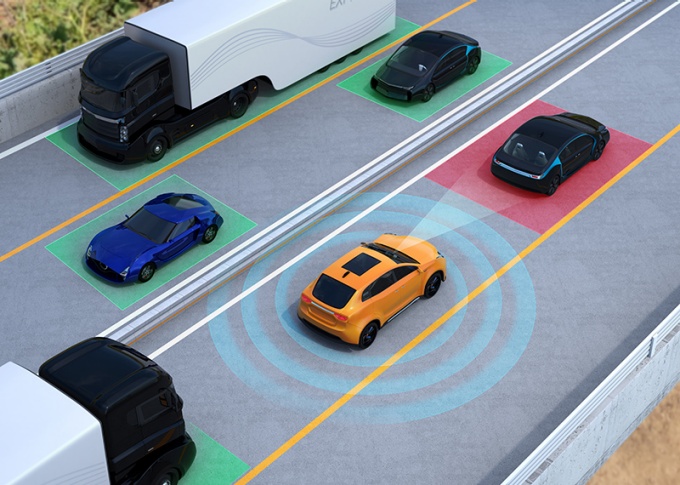Cyber Transportation Systems

Researches futuristic connected vehicle-infrastructure systems where cyber and wireless communications technologies will provide endless opportunities to improve transportation safety, efficiency, resiliency and sustainability.
This research area aligns well with regional economic development efforts such as Calspan’s initiative to establish a transportation safety campus to test safety-related CTS applications, and with UB’s Strategic Strength in Information and Computing Technology (ICT).
Cyber Transportation Systems Project

The Cyber-Transportation Systems (CTS) Project, founded by NSF/CPS and Cisco was started at State University of New York at Buffalo in 2010. The project takes a multi-disciplinary approach that combines cyber technologies, transportation engineering and human factors. It has two closely related objectives:
- Design and evaluate new CTS applications and traffic operations for improved traffic safety.
- Design and develop an integrated traffic-driving-networking simulator.
While transportation serves indispensable functions to society, it does have its own negative impacts in terms of accidents, congestion, pollution, and energy consumption. To improve traffic safety, the project develops and evaluates novel algorithms and protocols for prioritization, delivery and fusion of various warning messages so as to reduce drivers’ response time and workload, prevent conflicting warnings, and minimize false alarms. To improve traffic operations, the project will focus on the design of next generation traffic management and control algorithms for both normal and emergency operations (e.g. during inclement weather and evacuation scenarios). Both human performance modeling methods and human subjects’ experimental methods will be used to address the human element in this research. As the design and evaluation of CTS applications requires an effective development and testing platform linking the human, transportation and cyber elements, the project will also design and develop a simulator that combines the main features of a traffic simulator, a networking simulator and a driving simulator. The integrated simulator will allow a human driver to control a subject vehicle in a virtual environment with realistic background traffic, which is capable of communicating with the driver and other vehicles with CTS messages. Background traffic will be controlled by a realistic driver model based on our human factors research that accounts for CTS messages’ impact on driver behavior.
Participants
Funding Sources
- National Science Foundation
- CISCO
Smart Driving through Crowdsourcing
Nearly 42% of newly-sold vehicles in the U.S. have a telematics unit installed capable of collecting breadcrumb trails. This number is expected to reach 80% in the U.S. at the end of 2018. These trails provide data that could help identify potential traffic hazards in real time, and help identify driving behavior in response to traffic signs/signals and real time traffic conditions, as well as advise drivers adaptively on safe driving, fuel efficient driving, routes with least time, and routes with least mental load. A crowdsourcing approach will provide new insights in improving our road transportation.
Participants
Next-Generation Human-in-the-loop Transportation Simulation Models
With funds from the National Science Foundation and CISCO, ISTL researchers have been collaborating to develop an integrated traffic-driving-networking simulator (ITDNS), which combines the main features of a traffic simulator (TS), a networking simulator (NS) and a driving simulator (DS). The primary motivation behind developing ITDNS is to provide a unique facility supporting the design and evaluation of novel Cyber Transportation Systems (CTS), Connected Vehicle (CV) and Automated Vehicle (AV) applications. A key advantage which ITDNS provides is the ability to test human response to proposed applications in a controlled environment. Specifically, our ITDNS allows a human driver to control a subject vehicle in a virtual environment which is capable of communicating with other vehicles and infrastructure with CTS messages as well as sending warning messages to the driver. Moreover, the background vehicles in the ITDNS will eventually be controlled by a more realistic driver model that reflects how drivers react to various CTS warning messages.
Participants
Funding Sources
- National Science Foundation
- CISCO
Evaluating the Likely Environmental Benefits of Green Routing and Intelligent Intersections
A relatively new line of research which ISTL researchers have been probing recently focuses on evaluating the likely environmental benefits of intelligent transportation systems. In a recently completed project, ISTL researchers conducted a realistic assessment, using a real-world case study, of the likely environmental benefits of an ITS strategy that involves providing dynamic Preliminary results indicate that green routing could result in significant reductions in emissions, but that this naturally comes at the expense of an increased travel time. For one scenario considered assuming a traffic stream of only passenger cars, green routing resulted in an almost 13% reduction in Carbon Monoxide (CO) emissions, and a corresponding 8% increase in travel time. The results also indicate that tangible emissions reductions are achievable at low to medium market penetration levels for green routing application, especially when the strategy is applied in a way that intelligently targets travelers with the largest likely emissions savings.
Participants
Funding Sources
- USDOT
- ITS Joint Program Office



